
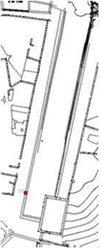
| 1 m in areas with dense vegetation |
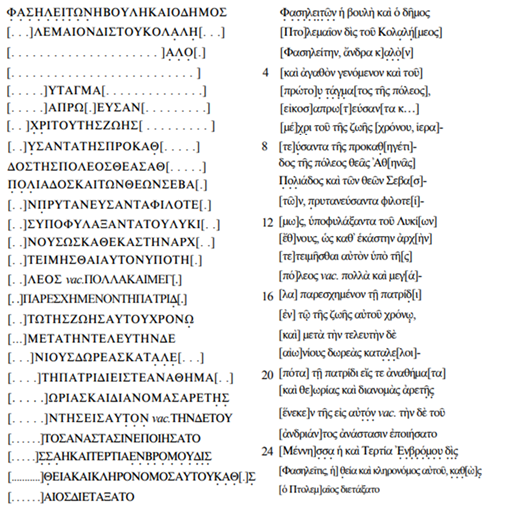 |
|||||
He was a priest of Polias and the god emperors.
Ptolemy son of Phaselis, Ptolemy son of Phaselis, son of Kolalemis, who had been a prytan, hypophylax of the Lycian League, who had donated so much and so much to the city that he was honored by the city for each office he held during his lifetime, and who had bequeathed endless gifts to the homeland after his death for votive offerings, for the holding of feasts and for the distribution of charity, honored Ptolemy son of Phaselis out of respect for him. This statue was erected by his heir, Mennessa, also known as Tertia of Phaselis, daughter of Enbromos, son of Enbromos, a noble personality, and Ptolemy duly carried it out." (Tüner Önen, 2008:325)."
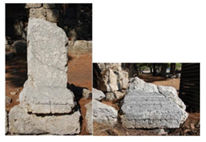
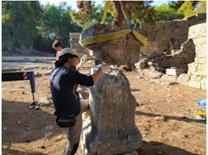 |
||
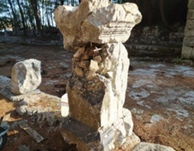
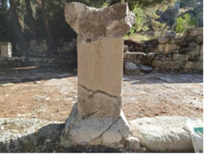 |
||
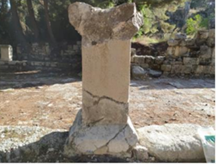
 |
||
1914, 124, no. 140; Barth 1850, 252, no. 26; CIG Add. III s.
1156; van Buren 1908, 188, no. 17; TAM II 1200; Blackman.
1981, 140, lev. 69, 4); Tüner Önen, 2008, 324-326, no. 22."
[Πτ]ολ[εμ]α[ίου] van Buren and CIG; Ptolemy's name was used for about 1 century
It was a very popular name in Lycia under Ptolemy. Kolalemis, the name of Ptolemy's grandfather, is a local Anatolian name and has so far been recognized from Phaselis. It is known from 6 inscriptions (Nos.: 25, 27, 32, 33, 34, 40) and from a funerary inscription from the Dungeon side in the Phaselis teritorium (TEp. 5). Kalinka translates this name as Κολαλή[μιος] completed, but another inscription from Phaselis (Nr. 34) shows that Κολάλημις
The genitive case is Κολαλήμεος. Therefore, here too the genitive case Κολαλήμεος is accepted. However, for the genetivi of nouns ending in -ις, the forms -εως, -εος and -ιος all of them were also found to be used.
Line- 3/5 ἄνδρα καλὸ[ν καὶ] ἀγαθ[ὸ]ν γενόμενον καὶ [τοῦ πρ]ώτου τάγματος τῆς πό̣[λ]εο[ς
Line- 6: At the beginning of the Imperial Period, Rome asked the eastern cities to elect δεκάπρωτοι. In Lycia, in the early years of Emperor Hadrian, this practice began to be abandoned.
and is thought to have been replaced by εἰκοσάπρωτοι. These officials
are responsible for the regular payment of city taxes and over time, urban finance They also had other duties related to their work. Εἰκοσαπρῶτοι office
It indicates that Ptolemy's career can be dated to the 2nd quarter of the 2nd century AD.
Line- 7-8: καὶ μέ](χ)ρι τοῦ [τ]ῆς ζωῆς [ἀ]ρχι-|ερεύσαντα, van Buren. The adjective προκαθηγέτις is very rarely used. In addition to the god-emperors, the city had the priesthood of Athena Polias.
is a common occurrence for the cities of Lycia. Apart from Phaselis, many other cities created priestly offices for their gods.
Line- 11: Prytans were elected for a one-year term and, at least during the
are the civil servants who make up an official office.
Line- 12: ὑποφύλαξ was an office that formed an administrative link between the polis and the koinon, whose sphere of influence was limited by local needs and was usually held by the local gentry. So far, 22 hypophylaxes who served in the Lycian League have been identified.
Line- 22: ΑΥΤΟΣ, Beaufort; αὐτο[ύς] van Buren.
Line- 24: Μέννησσσα is a name known only from this inscription. The name Τερτία was used in the province of Asia
is a known and used name. Apart from Phaselis in Lycia, Idebessos and
It is also found in Balbura. Ἔνβρομος, the name of Tertia's grandfather, is a local name found in Lycia, and apart from this inscription, Ἔμβρομος is found in two inscriptions at Phaselis (Nr. 32, 33) and again in the form of Ἔνβρομος in one inscription (Nr. 40) (Tüner Önen, 2008:325-326)."